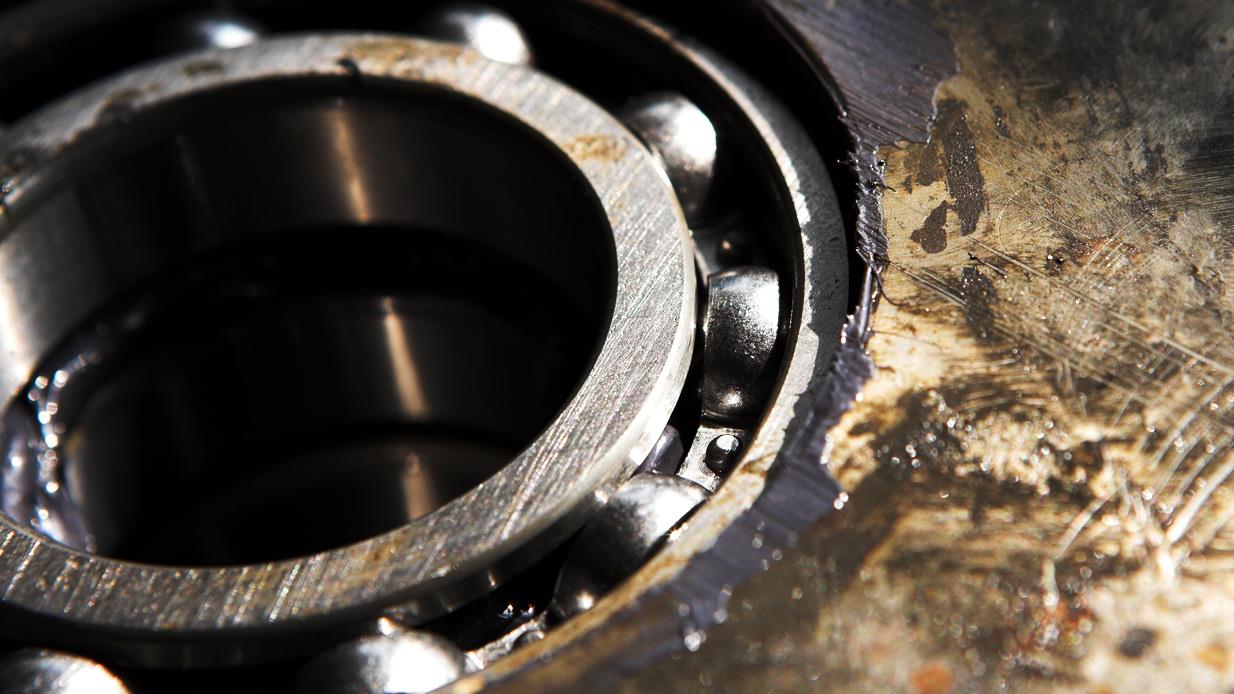
If you are experiencing premature bearing failures, you not only should look at your lubrication practices but also your installation practices. When using an induction heater, it is important to make sure that the heating is steady and even; fast is not always good, especially if you do not know what is happening with the temperature of the outside diameter (OD) of your bearing. Remember that the inner race heats faster than the outer race. Precision bearings are prime candidates.
In the picture above, on the left you see a single temperature probe placed on the inside diameter (ID) of the bearing. By the time the temperature of the ID reaches 110 degrees C, the temperature of the OD is only 60 degrees C. This could be a huge problem if the clearance between the ball or roller bearings and the raceways of the ID and OD is not enough to handle the temperature difference. In these cases, the bearing balls or rollers get squeezed between the OD and ID, damaging the bearing before it is even installed.
The amount of internal clearance reduced by the differential expansion of the two rings can be determined by using the following formula:
δt =α×ΔT ×Do
Where:
δt = Amount of reduced clearance due to heat differential (mm)
α = Bearing steel linear expansion coefficient 12.5 ×10-6/degrees C
ΔT= Inner/outer ring temperature differential (degrees C)
Do = Outer ring raceway diameter (mm)
Outer-ring raceway diameter (Do) values can be approximated by using the formulas below:
For ball bearings and spherical roller bearings,
Do =0.20 (d +4.0D)
For roller bearings (except spherical roller bearings),
Do =0.25 (d +3.0D)
Where:
d= Bearing bore diameter (mm)
D= Bearing outside diameter (mm)

Radial Internal Clearance of Deep Groove Ball Bearings (Courtesy of NTN Bearings Corporation)

Interchangeable Radial Internal Clearance for Cylindrical Roller Bearings (Courtesy of NTN Bearings Corporation)
So, let’s look at an example of a deep groove bearing:
d = 100 mm
ΔT = 50degrees C
α = 12.5 × 10-6/degrees C
D = 180 mm
C2 = 2-20 μm (0.002 – 0.020 mm)
δt = (12.5 × 10-6) × (50) × [0.20 (100 + (4 × 180))]
δt = 0.10 mm
The built-in clearance is only 0.002-0.020 millimeters. Granted, this is a worst-case scenario, but it highlights the need for careful temperature control.
On the right side of the image at the top, you see two temperature probes being used, one mounted to the inner race and the other to the outer race. These induction heaters allow you to monitor both probes simultaneously, not only letting you reach the desired temperature of the ID but also letting you control the maximum temperature difference between the ID and OD, thereby preventing the squeezing of your bearing balls.
This concern is also an issue with gears. A big temperature difference between the ID and OD can create cracks in the membrane between the ID and OD, damaging the gear before it is even installed.
Knowing what the clearance is for each bearing and what the maximum temperature difference should be between the ID and OD is key to successful, worry-free induction heating. Be sure to use a quality induction heater that lets you monitor and control both of these temperatures while heating takes place. In addition, thorough automatic demagnetizing at the end of the heating cycle and report generation are a must.
When heating a bearing with an induction heater, the rolling elements will distort to absorb the reduction of internal clearance due to the thermal differential. The bearing is not under load, and there is no additional internal clearance loss due to the interference fit when the bearing is mounted. This is why you never rotate a hot bearing. The hot bearing should go directly from the heater to the shaft and should not to be rotated until thermal equilibrium is restored. With that being said, there is only so much distortion that a bearing can handle to absorb this temperature difference. Even though the high differential temperature will do irreparable harm to a bearing, it is not the only factor to consider.




